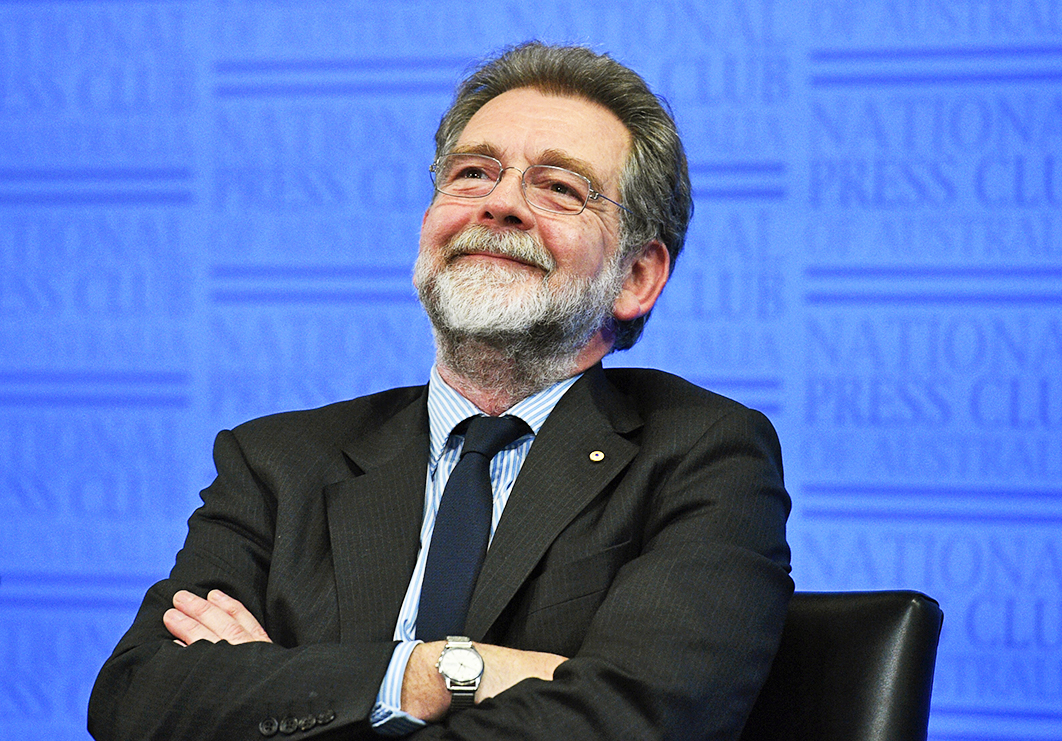How to Defend Australia
By Hugh White | La Trobe University Press | $34.99 | 336 pages
Hugh White doesn’t present as a revolutionary. He has a beard, but it’s neatly trimmed and his hair carefully combed. He’s an academic, but this professor wears the carefully chosen, well-cut tweeds more likely to have come from Oxford’s Shepherd & Woodward than an Oxfam shop. Nonetheless, and certainly as far as the Australian defence community is concerned, White is nothing less than a bomb-throwing anarchist who has infiltrated the citadel and is threatening its entire fabric.
How to Defend Australia is an attempt to explode the fragile bipartisan consensus that has removed defence from the political debate. By launching a direct assault not just on the three services but also on the defence industry and enormous vested interests, White is challenging the fundamentals of our defence and foreign policy settings. That’s why his book is important.
This doesn’t mean, however, that people who share his disillusionment with the current situation will embrace his proposed solution.
To understand exactly what the controversy is all about you need to realise that the person who has written this radical jeremiad is not merely the ANU’s professor of strategic studies but also a former deputy secretary (strategy) of defence and the person who established the (now) conservative Australian Strategic Policy Institute. This isn’t some kind of left-wing critique urging us to warm to China’s embrace. It’s by an insider, familiar with both the office layout at Russell Hill and the long, empty corridors of Parliament House, urging that the whole system be completely reworked.
The book itself is an elegantly written, straightforward recipe designed to answer the question posed in the title. Its meat comes from a detailed analysis of Australia’s strategic geography; a dash of spice is added with a review of how the changing world scene has transformed our geopolitics. But what really counts is the heat — a thorough and relentless analysis of the consequences of our current strategic settings. White has cooked up a witches’ brew that will upset (almost) everyone involved in the defence debate in Australia.
To understand why, we need to start at the beginning. Less than a month after a surprise Japanese air assault on Pearl Harbor destroyed the US Pacific Fleet in late 1941, readers of the Melbourne Herald opened their newspapers to find Labor prime minister John Curtin prophesying “immense change.” Then he added a crucial sentence: “Without inhibitions of any kind, I make it quite clear that Australia looks to America, free of any pangs as to our traditional links or kinship with the United Kingdom.” These words set the new parameters of the defence arrangements that White has set out to change.
Most of those who circle around the strategic debate come to it with personal military experience. White, however, spent his youth at Oxford (winning the enormously challenging John Locke Prize in Mental Philosophy, awarded for an essay tackling questions like “why?” or “why not?”). Later he worked as a journalist and as an adviser to defence minister Kim Beazley and prime minister Bob Hawke, before becoming the principal author of the Howard government’s 2000 defence white paper, which set in place the force structure and strategy that still prevails.
It’s this background that allows White to make his controversial case so persuasively. He doesn’t come to the issue having handed hostages to any of the usual participants in the debate: the military, politicians or other interest groups. Instead, he uses that single philosophical tool, logic, to shear through the conventional shibboleths and attempt to understand both what we are trying to achieve (security) and how this can best be accomplished (through self-reliance and abandoning the US alliance).
This isn’t a book that’s been quickly dashed off. More than a decade ago, I sat in on White’s compressed course on Australian defence policy at ANU. He began speaking, lucidly and smoothly, at 9am on Monday, finishing a fortnight later. As he spoke, words coalesced into sentences, which then formed themselves into carefully structured paragraphs in the air around him. Even at the time a book seemed an obvious next step, although not to White. “I’m still not quite finished yet,” he said. “It’s not quite ready.”
Since that time White has become identified as part of the “China lobby,” having published a number of essays on the need for Washington to offer Beijing strategic space and the potential for a collision between the two superpowers. In this book, however, he focuses his attention on Australia, mounting a strong and persuasive case that our current policy settings (and the alliance more generally) are no longer protecting the country.
How to Defend Australia is the product of a keen mind frustrated at our refusal to recognise (or rather our wanton disregard of) the consequences of our actions. White is not challenging the myriad benefits that have resulted from the US alliance: “Sustaining the status quo would be the best outcome for us,” he has written elsewhere. “But how far should we be prepared to go, and at what cost? These are awkward questions that we’ve avoided for too long.”
White poses a real challenge to the enormous mass of woolly, circular reasoning that surrounds the debate about how we would defend Australia. He simply, and explicitly, forges a link between policy and force structure; between illusory security rhetoric and the reality of boots on the ground.
In doing so, he performs the huge service of opening up a subject that has effectively been closed and placed off limits for debate since the late 1980s, when the Review of Australia’s Defence Capabilities, written by another ANU professor, Paul Dibb, first traversed the idea of independently defending our continent.
There’s already been serious pushback from those immersed in defence’s culture, and even fans of White may question some of his prescriptions. Take one example, his proposal for a deterrence posture relying on a fleet of twenty-four submarines. Such a strategy makes a great deal of sense today, when these vessels can remain undetected running silent and deep. But that could change dramatically if technological breakthroughs expose them to tracking by enemy forces, outflanking the book’s strategy. Alternatives could easily be constructed, but the questions linger.
More critically, it’s a policy premised on almost doubling defence spending to nearly 4 per cent of GDP. Reaching that figure would require steely determination — not something currently apparent on either side of politics. As for the big splash, the ambit claim that’s grabbed media attention — an indigenous Australian nuclear capability — well, that will alienate many of those on the left who might, perhaps, be attracted to other elements of White’s argument. By placing these questions at the forefront of debate, White draws attention to fundamental issues the country urgently needs to address.
For decades the strategic situation has been changing around us. Over the past few years this picture has shifted dramatically, and that’s why How to Defend Australia is much more than just a book about defence. It represents a fundamental attempt to rewire the strategic debate in this country, and it will reach out well beyond the usual suspects in the field. •




